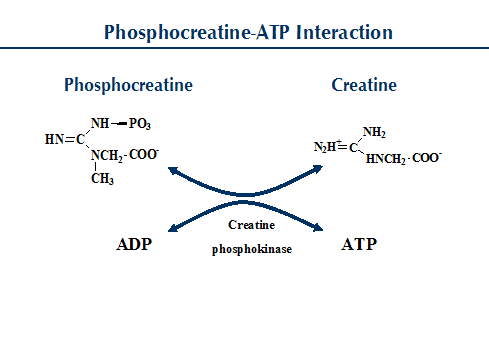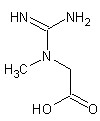If you are stuck in a rut and looking for a way to add variety to your exercise plan then keep on reading!
High-intensity interval training (HIIT) is a cardiorespiratory training technique that alternates between brief speed and recovery intervals to improve your aerobic capacity and increase the overall intensity of your workout. Research has shown that this type of aerobic training offers far more health and fitness benefits than the old standard of steady state cardio.
How does it work?
How does it work?
Most endurance workouts, such as walking, running, or stair-climbing are performed at a moderate intensity, or an exertion level of 5-6 on a scale of 0-10 with 10 being the most difficult. High-intensity intervals are performed at an exertion level of 7 or higher, and normally last for 30 seconds to 3 minutes. These high periods of exertion can also be as short as 8-10 seconds. A good rule of thumb to follow is the higher the intensity of an exercise, the shorter the speed interval. Recovery intervals are normally equal to or longer than the speed intervals.
What are the benefits of HIIT?
The many benefits of HIIT include:
1. Burn More Fat- Not only do you burn more calories by using HIIT, the high exertion of energy spent using high-intensity interval training causes your body to continue to burn calories for 24 hours after your workout.
What are the benefits of HIIT?
The many benefits of HIIT include:
1. Burn More Fat- Not only do you burn more calories by using HIIT, the high exertion of energy spent using high-intensity interval training causes your body to continue to burn calories for 24 hours after your workout.
2. Save Time- According to a study conducted by the American College of Sports Medicine, two weeks of HIIT improves your aerobic capacity as much as six to eight weeks of endurance training. Research has also shown that 15 minutes of high interval training can improve athletic progress more so than one hour of medium intensity workouts. This is huge for people on a hectic schedule or those that hate to do "cardio".
3. Healthy Heart- HIIT has been proven to help the blood vessels and arteries of the heart. Doctors have found that the heart is actually insulated from over-exertion because of the brief time of the intensity, but with the benefits of exerting the heart.
4. No Equipment- Although jumping rope, bicycling and rowing are good HIIT exercises, equipment is not a necessity; you can also run, jump or use plyometrics as part of your HITT program.
5. Do It Anywhere- You can adjust to your location to perform a variety of exercises. Although you may prefer a gym, it is not, by any means, necessary. This is great for those of you that enjoy exercising outdoors.
6. Retain Muscle- Although steady state cardio can bring about both weight loss and muscle loss, HIIT coupled with weight training can encourage weight loss while retaining muscle mass. The increased endurance and aerobic capacity in HIIT promotes muscle growth and enhanced weight training performance.
7. Challenging- High-intensity interval training is perfect for seasoned exercisers that may have become bored with their exercise programs. It's also ideal if you have hit a plateau and are trying to break through to a new level of fitness. More so than other methods, high-intensity interval training is also challenging enough to see fast results.
8. Increase Metabolism - In addition to the fat burning and muscle retention that HIIT can offer, it also increases your levels of the human growth hormone (HGH) in the body considerably for the 24 hours after a workout. HGH plays a significant role in the caloric burning process, meaning your metabolism is greatly increased for that period of time.
Is HIIT safe?
Any type of high-intensity exercise of brings with it a higher risk of musculoskeletal injury and cardiac events. Along with healthy individuals, HIIT has been studied and used as a training method for people with heart disease and congestive heart failure. Under clinical supervision, tests subjects were able to tolerate high-intensity intervals without negative effects. Most importantly, this population experienced greater improvements in cardiovascular function compared to those using continuous moderate-intensity training.
So what is the bottom line? Just like with any physical activity, you may want to check with your health care provider before adding it to your exercise routine.
How do I use HIIT?
Choose an aerobic exercise like running, rowing or stationary bicycling. Warm up for about 5 minutes, and perform 5 speed and recovery intervals. Finish your intervals with a 3-4 minute cool down. Here’s an example:
Time Interval Exertion Level (0-10)
5 min. Warm-up 3–4
1 min. Speed. 7–9
2 min. Recovery 5–6
1 min. Speed 7–9
2 min Recovery 5–6
1 min. Speed 7–9
2 min Recovery 5–6
1 min. Speed 7–9
2 min. Recovery. 5-6
1 min. Speed 7–9
5 min. Cool-down 3–4
23 min. Total Time
Gradually work up to 8-10 or more speed intervals, depending on your fitness goals. The most common mistake made with interval training is making the recovery intervals too short. So, remember to keep your work to rest ratio around 1:2.
Perform HIIT workouts 1-2 times a week at most to reduce your risk of injury. This high-intensity training method is best used periodically to enhance regular training rather than on a consistent basis because of its taxing demands on the body.
3. Healthy Heart- HIIT has been proven to help the blood vessels and arteries of the heart. Doctors have found that the heart is actually insulated from over-exertion because of the brief time of the intensity, but with the benefits of exerting the heart.
4. No Equipment- Although jumping rope, bicycling and rowing are good HIIT exercises, equipment is not a necessity; you can also run, jump or use plyometrics as part of your HITT program.
5. Do It Anywhere- You can adjust to your location to perform a variety of exercises. Although you may prefer a gym, it is not, by any means, necessary. This is great for those of you that enjoy exercising outdoors.
6. Retain Muscle- Although steady state cardio can bring about both weight loss and muscle loss, HIIT coupled with weight training can encourage weight loss while retaining muscle mass. The increased endurance and aerobic capacity in HIIT promotes muscle growth and enhanced weight training performance.
7. Challenging- High-intensity interval training is perfect for seasoned exercisers that may have become bored with their exercise programs. It's also ideal if you have hit a plateau and are trying to break through to a new level of fitness. More so than other methods, high-intensity interval training is also challenging enough to see fast results.
8. Increase Metabolism - In addition to the fat burning and muscle retention that HIIT can offer, it also increases your levels of the human growth hormone (HGH) in the body considerably for the 24 hours after a workout. HGH plays a significant role in the caloric burning process, meaning your metabolism is greatly increased for that period of time.
Is HIIT safe?
Any type of high-intensity exercise of brings with it a higher risk of musculoskeletal injury and cardiac events. Along with healthy individuals, HIIT has been studied and used as a training method for people with heart disease and congestive heart failure. Under clinical supervision, tests subjects were able to tolerate high-intensity intervals without negative effects. Most importantly, this population experienced greater improvements in cardiovascular function compared to those using continuous moderate-intensity training.
So what is the bottom line? Just like with any physical activity, you may want to check with your health care provider before adding it to your exercise routine.
How do I use HIIT?
Choose an aerobic exercise like running, rowing or stationary bicycling. Warm up for about 5 minutes, and perform 5 speed and recovery intervals. Finish your intervals with a 3-4 minute cool down. Here’s an example:
Time Interval Exertion Level (0-10)
5 min. Warm-up 3–4
1 min. Speed. 7–9
2 min. Recovery 5–6
1 min. Speed 7–9
2 min Recovery 5–6
1 min. Speed 7–9
2 min Recovery 5–6
1 min. Speed 7–9
2 min. Recovery. 5-6
1 min. Speed 7–9
5 min. Cool-down 3–4
23 min. Total Time
Gradually work up to 8-10 or more speed intervals, depending on your fitness goals. The most common mistake made with interval training is making the recovery intervals too short. So, remember to keep your work to rest ratio around 1:2.
Perform HIIT workouts 1-2 times a week at most to reduce your risk of injury. This high-intensity training method is best used periodically to enhance regular training rather than on a consistent basis because of its taxing demands on the body.









